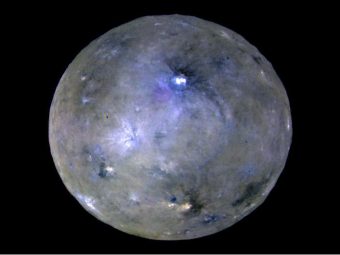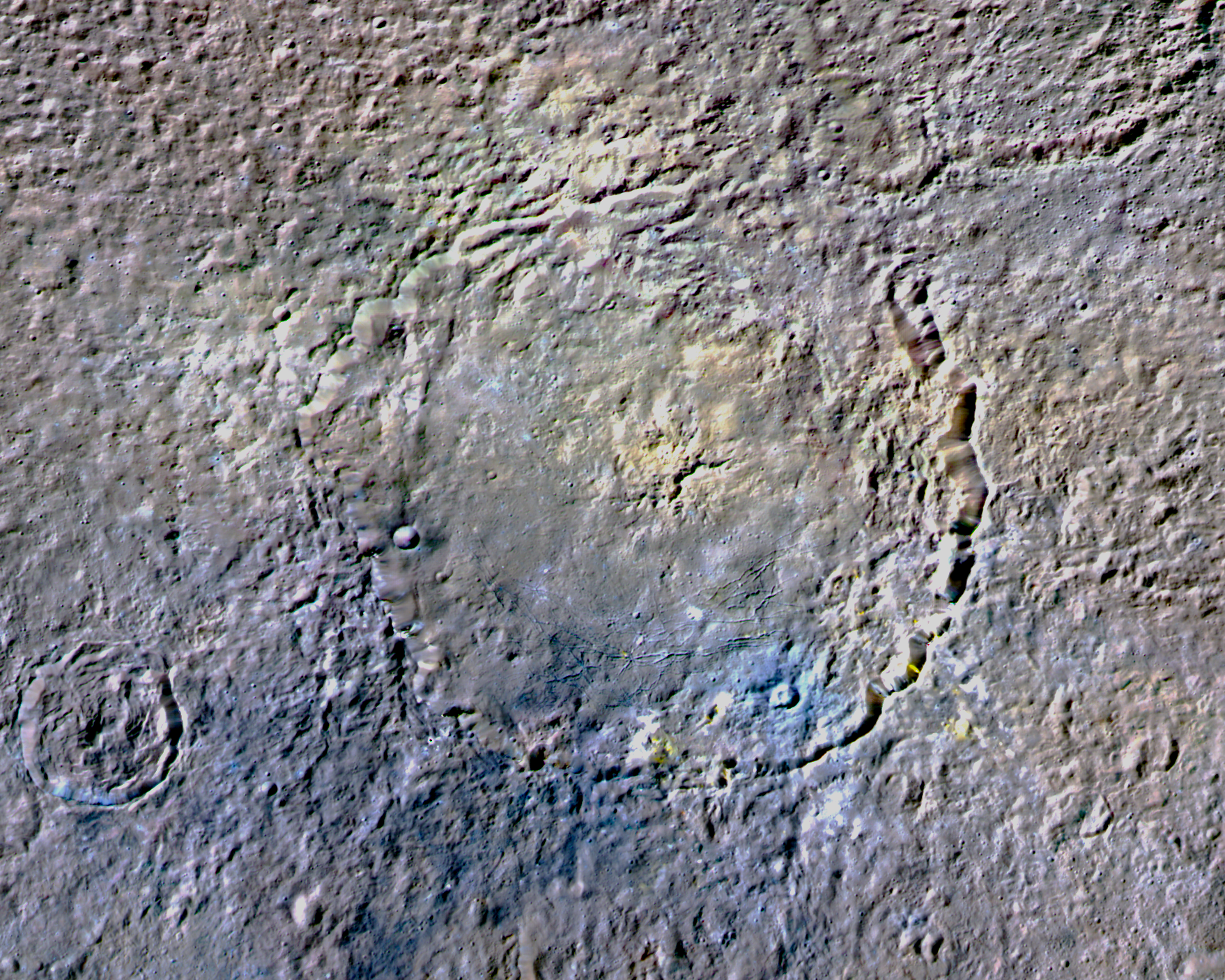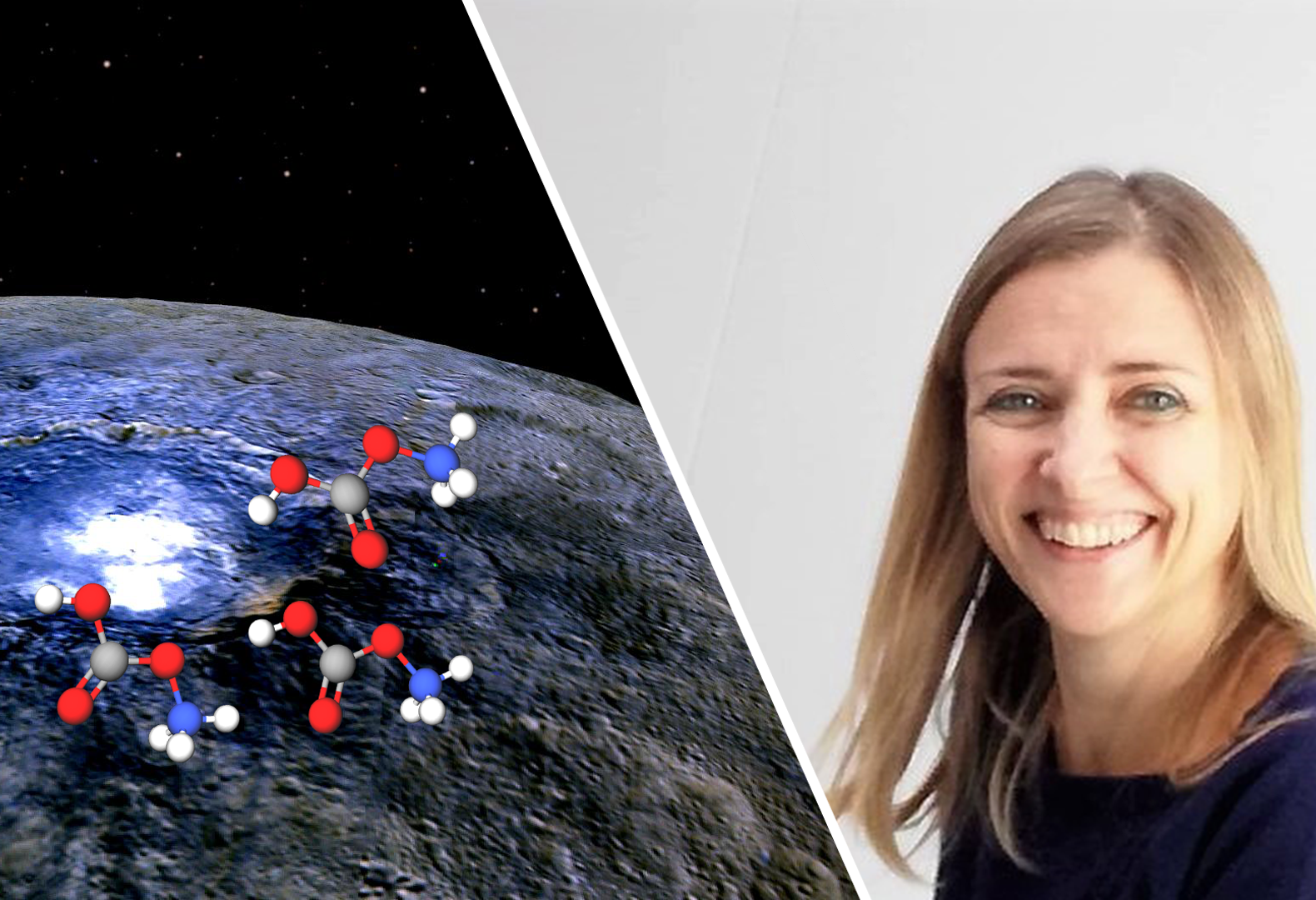
The image of Ceres was created based on data obtained from NASA's Dawn probe. Credits: NASA/JPL-Caltech/Ucla/Mps/Dlr/Ida
For Giuseppe Piazzi, who discovered it in 1801, Ceres was like a moving dot in the lens of his eye. Ramsden Circle. More recently, thanks to telescopes such as the Hubble Space Telescope and the Herschel Space Observatory, the celestial body has become a small, mysterious object, of known size and shape, with complex mineralogy and water vapor on the surface. But it was NASA's Dawn mission that gave us the picture of the dwarf planet, as it has been classified since 2006, for what it is: a potentially habitable ocean world. After Earth, it is the richest body in water in the inner solar system.
The Dawn mission was the first and so far only mission to visit the celestial body. During its three years of orbiting Ceres, from 2015 to 2018, the spacecraft mapped the geology, morphology, topography, structure and chemistry of the celestial body on a near-global scale, and discovered traces of an ancient brackish water ocean. Remnants may still be found today in small pockets – traces of organic matter (locally), carbon compounds (globally), ice and surface salt deposits, and signs of recent and ongoing geological activity, as well as the presence of exosphere.
In short, what Dawn has brought back to us about Ceres is a picture of a world with great astrobiological potential, structurally distinct, and characterized by a long history of interactions between liquid water, rocks, and organic compounds; A world in which complex and diverse chemistry exists.
Thanks to the data obtained from the instrument to (Visible and Infrared Mapping Spectrometer) on board the probe – a spectrograph funded by the Italian Space Agency and constructed by Leonardo with scientific guidance from ENAF – within distinctive geological formations called Lights An extraordinary diversity of chemical species formed in aquatic environments has been discovered. PhyllosilicateAnd carbonates – in particular Sodium carbonate – And chlorides, such as Sodium chloride Hydrate, common table salt, are some of these chemical types.
By sifting through 172 gigabytes of scientific data collected by the probe, a team of astronomers led by Enav has discovered, once again, within… Lights, again thanks to the Vir instrument, traces of another class of compounds were found, the presence of which not only increases the diversity and complexity of chemical species found on Ceres, but once again emphasizes the great astrobiological potential of this celestial body. the studio Posted on March 15 on Earth and Environment Communicationsthe group's magazine nature.
In the research, the team of scientists, including Maria Cristina De Sanctis, Filippo Giacomo Caruso, Mauro Ciarniello, Simone De Angelis, Marco Ferrari, Alessandro Friggieri, Andrea Rapone from INAPS in Rome, and Eleonora Amanetto from ASI, focused on: Danto nozzle.


False color image of Dantos Crater. Credit: Maria Cristina De Sanctis et al., Earth and Environment Communications, 2024
“With a diameter of 126 kilometers, Danto Crater is one of the most important structures on Ceres’ surface,” he explains. Enaf media Maria Christina Saints, first author of the publication. “It is a relatively young crater with complex mineralogy, and being one of the deepest craters on the dwarf planet, it is a window into the composition of its subsurface.”
One of the characteristics of this hole is the presence of many of them Lightswhich together represent the most spatially extensive system of these extraterrestrial geological formations Occator craterOne of Ceres' large craters. By analyzing archival photos of the crater that the two obtained Framing camera For the probe – the mission's scientific camera system – researchers identified within it two distinct groups of organisms Lightsin slightly different colors: Lights white and Lights yellow; A chromatic division that turns out to also be a compositional division.
Study all these spectra Lights Obtained by FAIR spectrometer, scientists found in Lights White absorption bands at around 4 µm and 3.4-3.5 µm, as well as bands at 2.73 and 3.07 µm: according to the researchers, they are a sign of sodium carbonate mixed with foliar silicates – compounds also found in other materials. Lights Scattered across Ceres. Analysis of Vir delle spectra Lights However, the Yellows find something they didn't expect. In this case, absorption features at 3.07, 3.28 and 3.55 μm were present in the spectra, bands associated with the presence of chemical species other than previously identified carbonates and salts: the fingerprint of large amounts of ammonium-rich compounds.
“In some of these very bright regions, there are very deep absorption bands in the regions of the electromagnetic spectrum where ammonium would normally be absorbed,” De Sanctis confirms. “Moreover, in some cases, a transition is observed between areas rich in ammonium silicate flakes (i.e. clays containing ammonium), which can be identified by specific absorption bands, and these Lights, which show absorptions in the same spectral range as ammonium silicate, but at much higher intensities and with different absorption profiles. In addition, such as Lights They are found in a large area of Ceres which has already been identified as the richest ammonia phyllosilicate zone.
At this point, the challenge facing researchers was to give a name and title to these ammonium-containing species. To achieve this, they compared the spectra Lights Yellow with already known spectra. The result of this investigation made it possible to find the right candidate


Maria Cristina De Sanctis of the INAF Institute of Space Astrophysics and Planetology in Rome
The researcher adds: “Potential compounds are identified by identifying absorptions and comparing them with data obtained in the laboratory on different compounds.” “In the specific case described here, we compared spectra Lights With many ammonium-rich materials, and even make measurements To this In our laboratory. The comparison is done with numerical methods that allow the spectrum to be simulated starting from different compounds mixed together in variable proportions. Many attempts are made until the best result simulating a spectrum is obtained Lights From Ceres. Of course, the result depends heavily on the raw materials that are taken into account in the simulation. In this case, the best result was obtained using ammonium bicarbonate data.”
The researchers explain that the discovery of these compounds on Ceres is related to at least three reasons. The first is that ammonia facilitates processes in aqueous solution and preserves organic compounds by acting as an antifreeze. The second reason is that the identification of areas rich in ammonium compounds indicates the presence of complex hydrothermal systems that could underlie the circulation of salty fluids from within the orb toward the surface. The third, finally, relates to the fact that ammonia in its reduced form can participate in many prebiotic chemical reactions.
“Nitrogen and hydrogen, which form…ammoniumalong with other elements, are fundamental in prebiotic and biochemistry (for example, in the formation of amino acids),” De Sanctis recalls in this regard. “Therefore, the discovery of new relevant materials in this context is very interesting.” Let's not forget that Ceres displays many of the elements and molecules on which organic chemistry is based, as well as molecules Aliphatic organic materials. There are also indications of the presence of liquid water underground, capable of rising to the surface through channels and cracks. Fractures also found in areas Lights “study here”
The researcher concludes: “The discovery of this new compound (or mixture of compounds) further enriches the number of interesting chemical species from an astrobiological point of view, which have been identified on the surface of Ceres.” “The chemical complexity of this dwarf planet is extremely high, and the discoveries still being made nearly ten years after the first data obtained by FAIR in the Dawn mission indicate how important this target will be in the future exploration of the solar system.”
to know more:

“Internet trailblazer. Travelaholic. Passionate social media evangelist. Tv advocate.”







More Stories
There is a way (and it's the only way) to exceed the speed of light: here's what it is
Traveling to the end of time: What will happen in the future of the universe! Watch the video
He discovered a gas that only living organisms produce